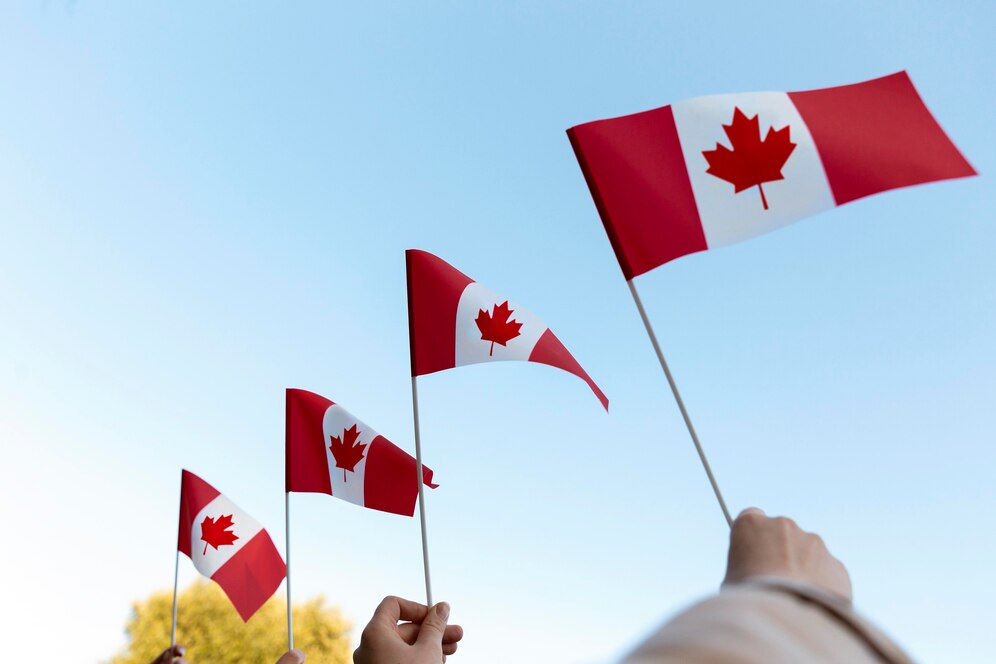Are you dreaming of a fresh start in a new country? Choosing the perfect place to move to is a significant decision, and two of the top contenders for immigrants worldwide are Canada and Australia. Both countries offer incredible opportunities, high standards of living, and welcoming environments for newcomers. As we venture into 2024, let’s dive into a detailed comparison of these two fantastic destinations to help you decide which one might be the best fit for your immigration journey. Choosing Between Canada Australia
Introduction to Canada and Australia
Canada and Australia are renowned for their high quality of life, excellent public services, and multicultural societies. They have consistently ranked among the best countries to live in, attracting people from all corners of the globe. However, each country has its own unique charm and set of advantages that might appeal to different individuals based on their personal preferences and life goals. Choosing Between Canada Australia

Quality of Life
Canada:
Canada is often celebrated for its outstanding quality of life. It boasts a robust healthcare system that is publicly funded, ensuring that all residents have access to medical care without financial burden. Education is another area where Canada excels, with numerous world-class universities and a strong public school system. Canadian cities like Toronto, Vancouver, and Montreal are known for their cleanliness, safety, and vibrant cultural scenes. Additionally, Canada’s breathtaking natural landscapes, including the Rocky Mountains and the Great Lakes, offer endless opportunities for outdoor recreation and adventure. Choosing Between Canada Australia
Australia:
Australia also ranks high on the quality of life scale. Its healthcare system is similar to Canada’s, providing publicly funded medical services to all residents. The education system in Australia is top-notch, with many universities recognized globally for their excellence. Australian cities such as Sydney, Melbourne, and Brisbane are famous for their cleanliness, safety, and dynamic cultural life. The country’s diverse environments, from stunning beaches to the iconic Outback, make it a paradise for those who love the outdoors.
Employment Opportunities
Canada:
Canada’s economy is diverse and thriving, with numerous opportunities in various sectors such as technology, healthcare, engineering, and finance. The country enjoys a low unemployment rate and offers multiple programs to help immigrants integrate into the workforce. The Express Entry system, which ranks candidates based on factors like age, education, work experience, and language proficiency, has become a popular pathway for skilled workers to find employment in Canada.
Australia:
Australia’s economy is also robust, with significant opportunities in industries like mining, healthcare, engineering, and information technology. Like Canada, Australia has a low unemployment rate and several immigration programs designed to attract skilled workers. The Skill Select program allows individuals to apply for a visa based on their skills and qualifications, making it easier for professionals to secure employment in their respective fields.
Immigration Policies
Canada:
Canada is renowned for its welcoming immigration policies. The country has several programs tailored to attract skilled workers, entrepreneurs, and students. The Express Entry system is a points-based system that ranks candidates based on criteria such as age, education, work experience, and language proficiency. Provincial Nominee Programs (PNPs) allow provinces to nominate individuals who meet specific labor market needs. Additionally, Canada has family sponsorship programs that make it easier for families to reunite.
Australia:
Australia also has immigration policies designed to attract skilled workers. The General Skilled Migration (GSM) program includes various visa options, such as the Skilled Independent visa (subclass 189) and the Skilled Nominated visa (subclass 190). These visas are points-based, awarding points for factors like age, work experience, education, and English proficiency. Australia also offers family sponsorship visas, allowing residents to bring their family members to the country.
Cost of Living
Canada:
The cost of living in Canada varies widely depending on the city. Major cities like Toronto and Vancouver are known for their high housing costs, while smaller cities and towns offer more affordable living options. Generally, the cost of groceries, transportation, and other essentials is reasonable. Canada also has a strong social welfare system, providing support for those in need.
Australia:
Australia’s cost of living is generally higher than Canada’s, particularly in cities like Sydney and Melbourne. Housing costs can be significant, although smaller cities and regional areas tend to be more affordable. The cost of groceries, transportation, and other essentials is also higher. However, Australia offers a high standard of living and extensive social support systems.

Climate
Canada:
Canada’s climate varies greatly depending on the region. The country is famous for its cold winters, especially in areas like the Prairie provinces and the northern territories. However, cities like Vancouver enjoy milder winters. Summers can be quite warm, particularly in central and eastern Canada. This diverse climate allows for a wide range of activities, from skiing and snowboarding in the winter to hiking and swimming in the summer.
Australia:
Australia is known for its warm climate. The country experiences mild winters and hot summers, with regional variations. Coastal areas like Sydney and Brisbane have a more temperate climate, while the interior can be extremely hot and dry. Australia’s climate is perfect for outdoor activities year-round, from beach outings to exploring the Outback.
Cultural Diversity
Canada:
Canada prides itself on being a multicultural society. The country has a long history of welcoming immigrants from around the world, resulting in a rich cultural tapestry. Canadian cities are home to diverse communities, and multicultural festivals and events are common. The country’s official bilingualism (English and French) also reflects its commitment to diversity.
Australia:
Australia is also a multicultural nation with a diverse population. The country has a significant immigrant population, contributing to its rich cultural diversity. Australian cities are known for their multicultural neighborhoods, offering a variety of cultural experiences, cuisines, and festivals. Australia’s immigration policies continue to support and encourage diversity.
Citizenship and Permanent Residency
Canada:
Canada offers a clear pathway to permanent residency and citizenship. Permanent residents can apply for citizenship after living in Canada for three out of the five years preceding their application. Canadian citizenship provides numerous benefits, including the right to vote, access to a Canadian passport, and the ability to live and work anywhere in Canada.
Australia:
Australia also provides a pathway to permanent residency and citizenship. Permanent residents can apply for citizenship after living in Australia for four years, with at least one year as a permanent resident. Australian citizenship offers benefits such as the right to vote, access to an Australian passport, and the ability to live and work anywhere in Australia.
Social Services and Benefits
Canada:
Canada’s social services are robust and designed to support residents. The country offers universal healthcare, public education, and various social welfare programs, including unemployment benefits, child benefits, and support for seniors. Canada’s social safety net is one of the strongest globally, ensuring residents have access to essential services.
Australia:
Australia also provides extensive social services to its residents. The country offers universal healthcare, public education, and social welfare programs, including unemployment benefits, family payments, and support for the elderly. Australia’s social support systems are designed to ensure residents can access necessary services and support.
Language
Canada:
Canada has two official languages: English and French. English is widely spoken across the country, while French is primarily spoken in Quebec. Bilingualism is an asset in Canada, and knowing both languages can open up additional opportunities. However, English proficiency is generally sufficient for most immigrants.
Australia:
Australia’s official language is English, which is spoken by the vast majority of the population. English proficiency is essential for living and working in Australia. While there are many multicultural communities where other languages are spoken, English remains the dominant language in all aspects of life.
Safety and Security
Canada:
Canada is known for its safety and low crime rates. The country’s cities are generally safe, with low levels of violent crime. Canada’s law enforcement agencies are effective and responsive, ensuring a high level of public safety. The country’s political stability also contributes to its overall security.
Australia:
Australia is also considered a safe country with low crime rates. Australian cities are known for their safety, and the country’s law enforcement agencies are efficient and effective. Australia’s political stability further enhances its reputation as a secure place to live and work.
Conclusion: Choosing between Canada and Australia for immigration in 2024 depends on your personal preferences and priorities. Both countries offer excellent opportunities for immigrants, with high standards of living, robust economies, and welcoming cultures. Canada may appeal to those who prefer a colder climate and a strong social safety net, while Australia may attract those who enjoy a warmer climate and outdoor activities.
Both countries provide clear pathways to permanent residency and citizenship, making them attractive destinations for individuals and families looking to build a new life abroad. Ultimately, the best choice will depend on your unique circumstances and what you value most in a new home.

Disclaimer
The information provided in this article is for general informational purposes only. While we strive to keep the information accurate and up-to-date, we make no representations or warranties of any kind, express or implied, about the completeness, accuracy, reliability, suitability, or availability with respect to the content. Any reliance you place on such information is therefore strictly at your own risk. We recommend consulting with official immigration resources and professional advisors for specific guidance related to your situation.
Get Free Expert Advice: Are you ready to embark on your next adventure? Whether you’re seeking a work permit, tourist visa, or study opportunities in Canada or other countries, we’re here to help! Contact us today to learn how our expert services can simplify your journey and turn your dreams into reality. Reach out now and let’s start planning your future together!
- Canada Citizenship Requirements: Everything You Need to Know
- Canada’s New Visa Rules: What It Means for Indian Students
- Navigating Student Visa Regulations for Studying in the US, UK, Australia, and Canada
Also read:
- Why Canada’s 32% Drop in Study Permits for Indian Students in 2024 Could Affect Your Future Plans
- Canada Launches Rural and Francophone Community Immigration Pilots: A New Era for Skilled Immigrants
- Canada Expands Post-Graduation Work Permit (PGWP) Eligibility: A Gateway to Endless Opportunities for Indian Students
- Canada Takes Action to Combat Fraud in the Express Entry System
- Canada Announces Big Changes to Express Entry Immigration System: What It Means for Indian Aspirants



